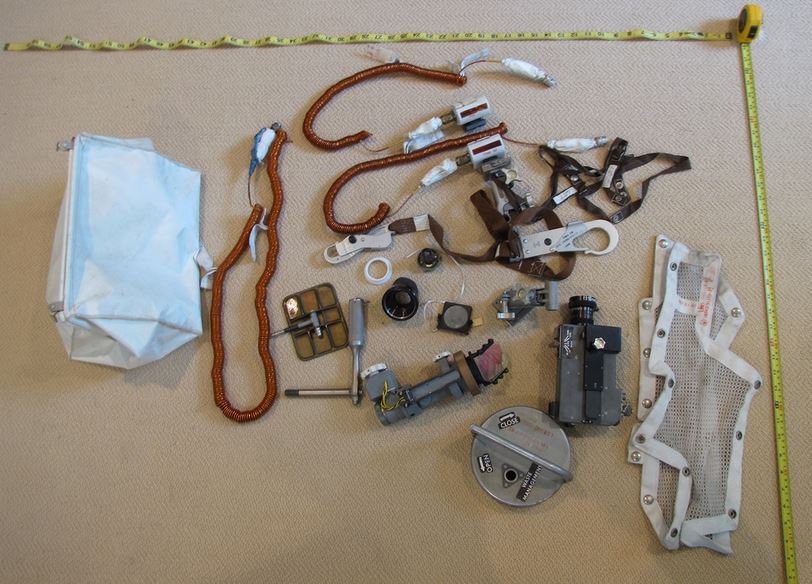Carol Armstrong, the widow of the late Neil Armstrong, the first human to set foot on the Moon, found a Lunar Landing bag, known as a McDivitt Purse, stashed in his closet and full of priceless parts scientists thought he had left on the Moon during the Apollo 11 mission.
Mrs. Armstrong found the purse months after her husband died in 2012 of complications associated with heart surgery.
According to Allan Needell, curator in the Space History Department at the Smithsonian National Air and Space Museum, Mrs. Armstrong had a feeling the bag might have come from the spacecraft. The Museum will be displaying the lost parts soon.
She contacted the museum, asking them whether they might be interested in what she found, and sent a photograph of the bag and the items spread out on her carpet (photo below).

McDivitt Purse (left) was stowed in the Lunar Module. The bag and its contents were supposed to have remained on the Lunar surface. (Credit: National Air and Space Museum, Smithsonian Institution)
On seeing the photograph, Mr. Needell said he became extremely excited at the prospect of receiving mementos flown in the Lunar Module Eagle during the historic Apollo 11 mission.
He called Eric Jones, Ken Glover and a team of experts who had put together the Apollo Lunar Surface Journal (ALSJ), to determine what the objects were.
The team immediately identified the bag, which the astronauts used to call a McDivitt Purse, and was officially called a Temporary Stowage Bag or (TSB). It was a special container stowed in the Lunar Module during launch.
The experts also identified the contents of the bag – mirrors, netting, an 80mm Hasselblad camera, tethers, and metal clips – as being from the Apollo 11 Lunar Module Eagle.
Mr. Armstrong is believed to have used the tether with a metal clip to hold his legs while he rested prior to leaving the Moon’s surface.
The bag had been stashed in Mr. Armstrong’s closet for 45 years. Nobody knew about it, not even his own biographer.

The Temporary Stowage Bag or McDivitt Purse. (Credit: National Air and Space Museum, Smithsonian Institution)
According to the Apollo 11 mission’s transcript, Mr. Armstrong did mention the McDivitt Purse. He had said:
“You know, that – that one’s just a bunch of trash that we want to take back – LM parts, odds and ends, and it won’t stay closed by itself; we’ll have to figure something out for it.”
“In the future, we hope to complete documenting and cataloging the entire collection of items and, as appropriate, to place them on public display. Seeing such things with one’s own eyes helps us to appreciate that these accomplishments are not just in history books or movies, but involved real people and real things, and that they involved an extraordinary amount of detailed engineering and planning.”
